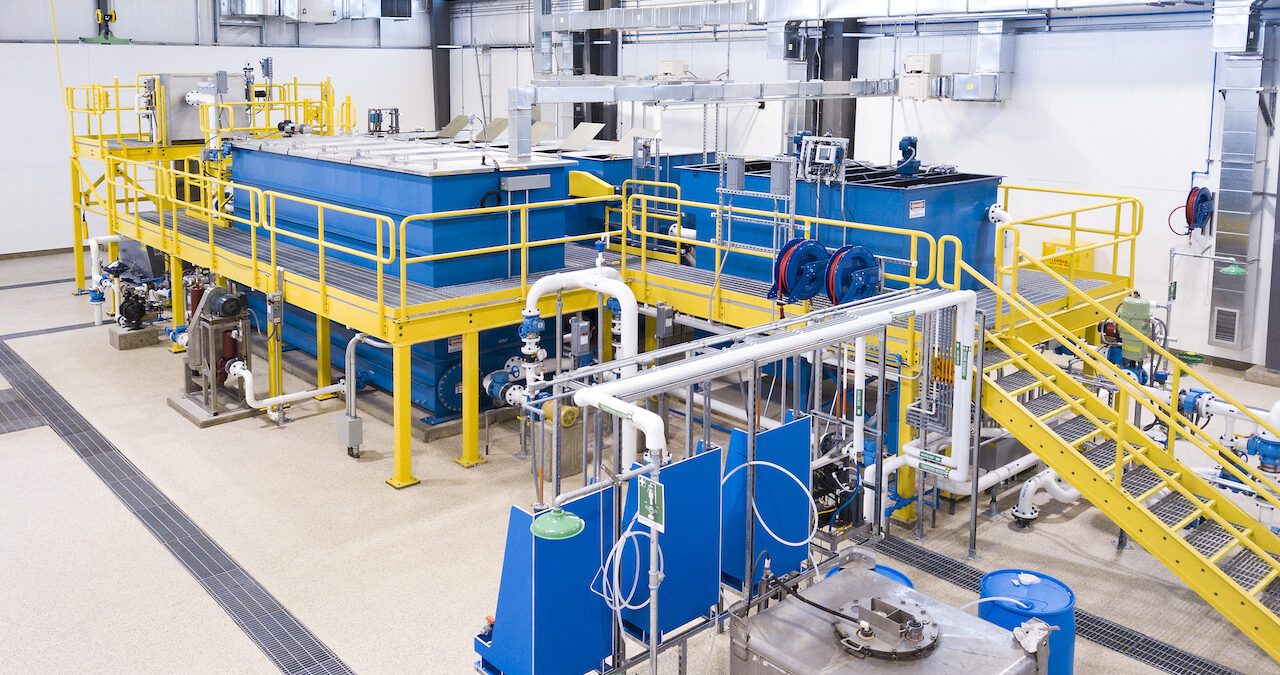Industrial Waste Water Treatment-- Enhance Effectiveness with Custom-made Water Treatment Equipments
Wiki Article
Advancements and Advances in Hazardous Waste Water Treatment Technologies
The landscape of commercial wastewater therapy is going through a transformative change, driven by technologies that boost both performance and sustainability. As governing criteria advance, the assimilation of AI and equipment learning right into wastewater monitoring systems assures to make certain and simplify procedures conformity.Summary of Waste Water Treatment Technologies
Wastewater treatment modern technologies incorporate a variety of techniques created to eliminate contaminants from commercial effluents prior to their release into the environment. These modern technologies are important for preserving ecological balance and making certain conformity with environmental regulations. The key classifications of wastewater treatment consist of physical, chemical, and organic methods, each offering unique purposes based upon the nature of the pollutants present.

Biological therapy approaches employ bacteria to break down raw material, making them particularly efficient for organic-rich effluents. Methods like turned on sludge and biofilm activators harness the all-natural degradation capabilities of germs, causing considerable decreases in biochemical oxygen need (FIGURE)
Advanced Purification Techniques
Advanced filtration techniques stand for an essential evolution in the realm of industrial wastewater treatment, enhancing the efficiency of contaminant removal procedures. Industrial Waste Water Treatment. These approaches incorporate a range of technologies, consisting of microfiltration, ultrafiltration, nanofiltration, and turn around osmosis, which give consecutive obstacles for different bit sizes and chemical structuresMicrofiltration and ultrafiltration utilize membrane systems to get rid of put on hold solids, germs, and larger organic molecules, boosting the top quality of effluent before additional treatment. Nanofiltration bridges the gap in between ultrafiltration and turn around osmosis, efficiently getting rid of organic compounds and divalent ions, thus reducing the load on downstream procedures.
Reverse osmosis uses the greatest level of purification by permitting only water and small particles to go through its semi-permeable membranes, making it perfect for reclaiming high-quality water from commercial effluents. Recent advancements in membrane layer innovation, including the growth of more fouling-resistant and sturdy materials, have actually substantially improved functional effectiveness and reduced expenses.
Incorporating these innovative filtering strategies not only boosts the general therapy process yet likewise adds to sustainability efforts by enabling water reuse and resource recuperation in industrial setups. (Industrial Waste Water Treatment)
Biological Therapy Innovations

Furthermore, the growth of engineered organic systems, such as membrane layer bioreactors (MBRs), combines organic treatment with innovative membrane layer filtration. This assimilation enables greater effluent high quality and reduced impact, making it suitable for space-constrained commercial facilities. Technologies in genetically engineered microbes have additionally emerged, boosting the biodegradation of particular contaminants, such as pharmaceuticals and hefty metals, that are commonly challenging to get rid of.
Furthermore, the execution of bioaugmentation techniques, where valuable microorganisms are presented to enhance the existing organic therapy processes, has actually revealed promising cause improving treatment efficiency. These innovations collectively indicate a trend towards even more reliable and lasting biological treatment techniques that can adapt to the developing intricacies of commercial wastewater streams. As industries remain to focus on ecological conformity, these biological developments will certainly play an essential role in wastewater monitoring.

Source Recuperation Methods
In commercial settings, the integration of source recovery approaches has become progressively important for boosting sustainability and lessening waste. These methods concentrate on extracting beneficial materials and power from wastewater streams, thus changing potential toxins into recyclable resources.One famous strategy is nutrition recovery, where nitrogen and phosphorus, commonly present in excess in wastewater, Visit Website are recorded and converted right into plant foods. This not only minimizes environmental impacts but also offers a round economic climate option for agricultural applications. Furthermore, technologies such as anaerobic food digestion permit for the conversion of organic waste into biogas, a renewable energy resource that can counter fossil fuel use in commercial procedures.
Additionally, advanced purification and membrane layer technologies assist in the recuperation of commercial by-products such as salts and metals. These recuperated products can be rehabilitated right into production processes, decreasing the requirement for virgin sources.
Future Fads in Drainage Management
As industries progressively prioritize sustainability, the future of wastewater click over here now administration is readied to undertake substantial transformations. Technological developments, such as expert system and artificial intelligence, will certainly make it possible for extra reliable surveillance and management of wastewater systems. These technologies can predict upkeep demands, maximize therapy procedures, and improve decision-making, eventually minimizing operational expenses and environmental impact.Moreover, the integration of round economic situation concepts will play an important function in wastewater administration. Industries are expected to change in the direction of systems that not just treat wastewater but additionally recoup useful resources, such as nutrients, water, and energy. This change will certainly reduce waste and promote the reuse of products, lining up with worldwide sustainability goals.
Arising treatment techniques, such as membrane layer bioreactors and progressed oxidation processes, will certainly additionally enhance the effectiveness of wastewater therapy, permitting better effluents appropriate for reuse. Additionally, governing frameworks are most likely to progress, emphasizing more stringent requirements for wastewater discharge and motivating markets to adopt cutting-edge treatment remedies.
Final Thought
In conclusion, the development of commercial wastewater therapy technologies demonstrates a considerable change in the direction of enhanced efficiency and sustainability (Industrial Waste Water Treatment). Advancements in innovative purification techniques, biological treatments, and resource healing techniques highlight the sector's dedication to ecological stewardship.The landscape of commercial wastewater therapy is undertaking a transformative shift, driven by innovations that enhance both efficiency and sustainability.Wastewater treatment innovations include a variety of techniques created to eliminate impurities from commercial effluents prior to their launch right into the go to this website setting.Using the power of organic procedures has actually led to considerable advancements in the therapy of industrial wastewater.Furthermore, the implementation of bioaugmentation techniques, where advantageous microorganisms are introduced to enhance the existing organic therapy processes, has shown promising outcomes in boosting treatment performance. These innovations jointly indicate a fad towards more sustainable and reliable biological therapy methods that can adapt to the evolving intricacies of commercial wastewater streams.
Report this wiki page